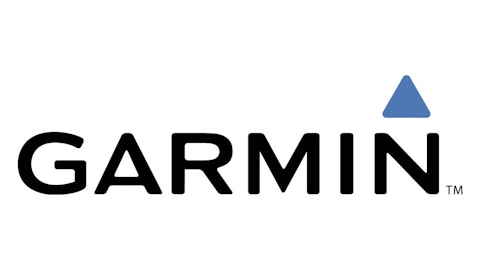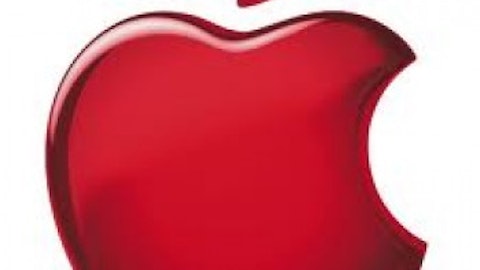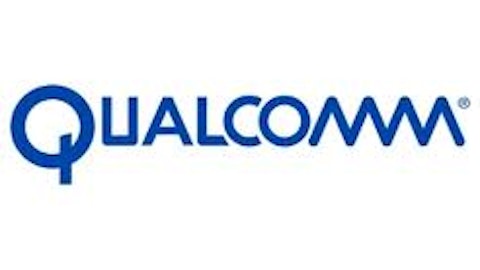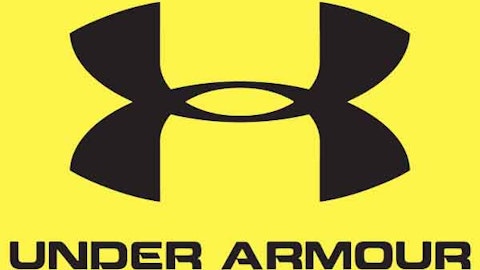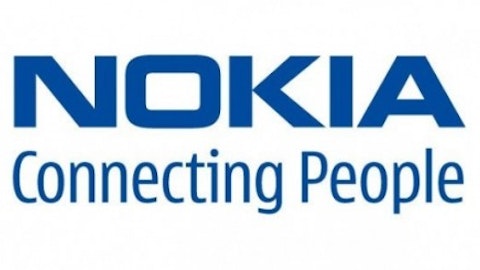Apple Inc. (NASDAQ:AAPL) shares have plummeted to borderline irrational lows. At just 8.2 times forward earnings, investors now have the opportunity to get their hands on a great company at a great price. But two major issues keep many investors glued to the sidelines: slipping margins and increasing competition.
Slipping margins, or a well-executed product mix shift?
Apple Inc. (NASDAQ:AAPL)’s gross margin is down significantly. In Apple Inc. (NASDAQ:AAPL)’s first quarter, it decreased to 38.6%, from 44.7% in the year-ago quarter. But does this mean Apple Inc. (NASDAQ:AAPL)’s lower margins from the first quarter are the new norm? Not necessarily.
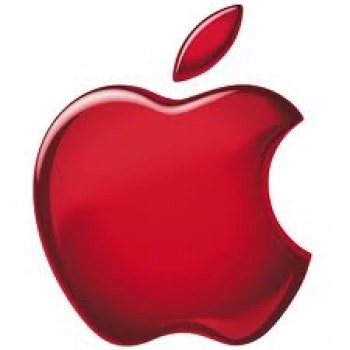
Second, Apple Inc. (NASDAQ:AAPL) clearly explained that the iPad Mini gross margin is “significantly below the corporate average” and that the new product mix from the cannibalization of full-sized, higher-margin iPads by iPad Minis is a shift management eagerly chooses. “I see cannibalization as a huge opportunity for us,” Cook explained. “Our base philosophy is to never fear cannibalization. If we do, somebody else will just do it and so we never fear it.”
So far, it looks like choosing lower margins is helping Apple Inc. (NASDAQ:AAPL) bring in a lot more dollars in revenue, even if it’s collecting less profit on each unit it sells. Apple Inc. (NASDAQ:AAPL)’s iPad segment, for instance, was the company’s fastest-growing segment in the first quarter, with iPad unit sales increasing 48% from the year-ago quarter. Furthermore, estimates from Canalys suggest that “Apple would surely have lost ground to its competitors” without the launch of the iPad Mini; according to Canalys’ estimates, the iPad Mini made up over half of Apple Inc. (NASDAQ:AAPL)’s total tablet shipments during the quarter.
Apple Inc. (NASDAQ:AAPL) remains the clear leader in the high-end hardware market
It’s no secret that Apple Inc. (NASDAQ:AAPL) sacrifices revenue in pursuit of higher margins. Yes, Apple Inc. (NASDAQ:AAPL) is losing market share. Yes, lower price points from competitors may have been a major influence in Apple Inc. (NASDAQ:AAPL)’s decision to sell a lower-priced tablet. But there is still very little evidence that Apple Inc. (NASDAQ:AAPL)’s position as the high-end producer is threatened.
A December 2012 report from IDC showed that Apple Inc. (NASDAQ:AAPL) shipped 15% of all “connected devices” in the third quarter, trailing Samsung at 21.8%. But Apple Inc. (NASDAQ:AAPL) was able to maintain an average selling price, or ASP, of $744 across its device categories, compared to Samsung’s $434 ASP.
As IDC’s Reith points out, “The fact that Apple Inc. (NASDAQ:AAPL)’s ASP is $320 higher than Samsung’s with just over 20 million fewer shipments in the quarter speaks volumes about the premium product line that Apple Inc. (NASDAQ:AAPL) sells.”
Furthermore, though Apple Inc. (NASDAQ:AAPL)’s year-over-year gross profit margin has declined, it still remains significantly higher than the gross margins of other publicly traded hardware producers. Hewlett-Packard Company (NYSE:HPQ) and Dell Inc. (NASDAQ:DELL) , for instance, have trailing-12-month gross profit margins of 23.2% and 21.3%, respectively. Compare this to Apple Inc. (NASDAQ:AAPL)’s TTM gross profit margin of 41.9%.
What about the exploding market growth in smartphones and tablets?
IDC claimed HP as the only company among the top five device makers to report slowing sales growth in the third quarter of 2012, as sales shifted to smartphones and tablets. Dell, which didn’t make IDC’s list, saw PC sales decline by 16% in the fourth quarter, the second-worst performance (next to Acer) of the top five PC manufacturers on Gartner Inc. (NYSE:IT)‘s list.
Going forward, HP and Dell could face more of the same if they can’t successfully crack the smartphone or tablet markets. Gartner reported a 4.9% decline in sales of PCs on a global basis, and it expects the trend to continue.
These are legitimate reasons for low multiples on forward earnings. But Apple Inc. (NASDAQ:AAPL)’s market outlook differs drastically. IDC expects smartphone and tablet categories to grow by 95.9% and 131.2% by 2016, respectively. And fortunately for Apple Inc. (NASDAQ:AAPL) investors, these two categories make up a whopping 86% of Apple Inc. (NASDAQ:AAPL)’s revenue.
A classic case of shortsightedness
In general, buying opportunities surface when pessimism peaks — not when the bull is already running. So if you are looking for a buy signal, this could very well be it. At just 10 times trailing-12-month earnings, pessimism seems already priced into Apple Inc. (NASDAQ:AAPL)’s stock, with the company’s market opportunities getting little respect.
If you’ve considered buying Apple Inc. (NASDAQ:AAPL) shares, don’t let a sell-off dissuade you. It should entice you.
The article The Case Against Apple Bears originally appeared on Fool.com.
Fool contributor Daniel Sparks has no position in any stocks mentioned. The Motley Fool recommends Apple. The Motley Fool owns shares of Apple.
Copyright © 1995 – 2013 The Motley Fool, LLC. All rights reserved. The Motley Fool has a disclosure policy.
